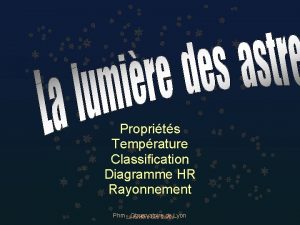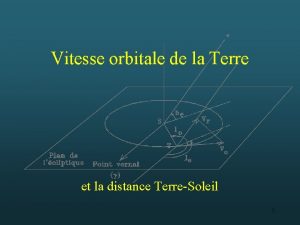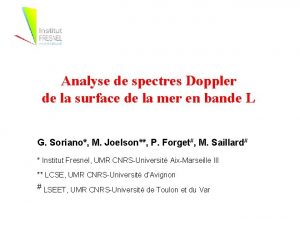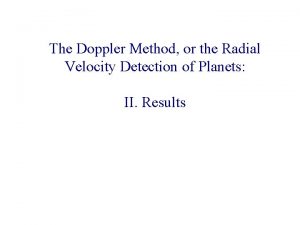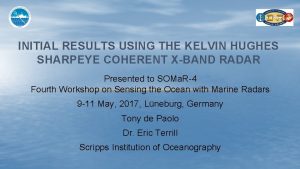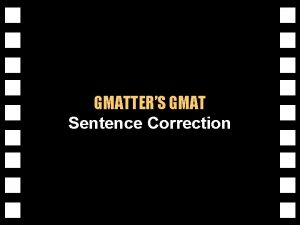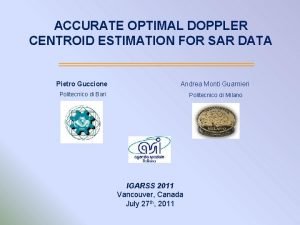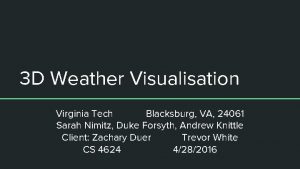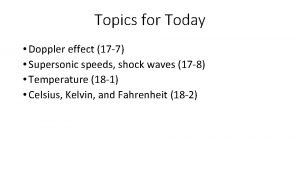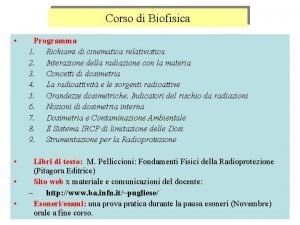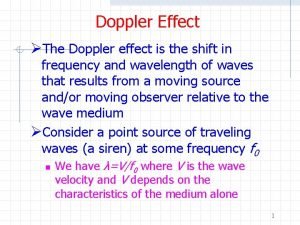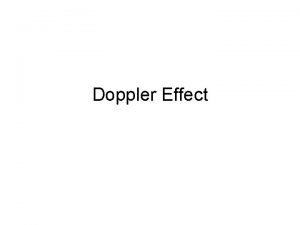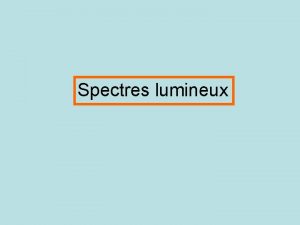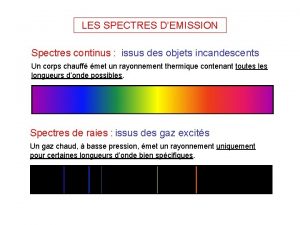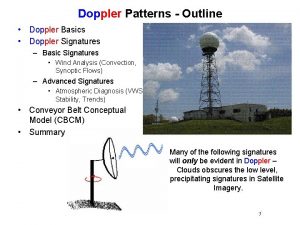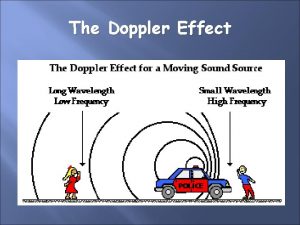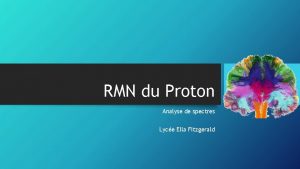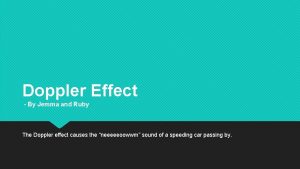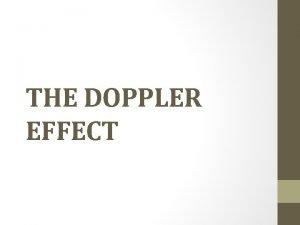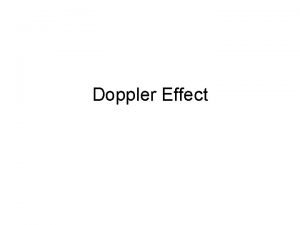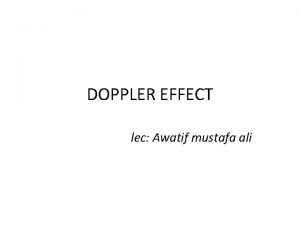Analyse de spectres Doppler de la surface de















- Slides: 15

Analyse de spectres Doppler de la surface de la mer en bande L G. Soriano*, M. Joelson**, P. Forget#, M. Saillard# * Institut Fresnel, UMR CNRS-Université Aix-Marseille III ** LCSE, UMR CNRS-Université d’Avignon # LSEET, UMR CNRS-Université de Toulon et du Var

Introduction Doppler spectrum • Ocean surface is time varying: h(r, t) • Harmonic w 0 -> s(w 0+dw) • More information in backscattering radar configuration • HF and VHF radars provide current maps at km resolution Coastal zone : UHF? • In coastal zone, environmental parameters change faster • Smaller wavelength provides better resolution -> UHF • Need for advanced hydrodynamic and electromagnetic models

Electromagnetic scattering Time-harmonic scattering Scattered field Air 2 D surface Sea water Exponential attenuation Skin depth d << l Curved surface impedance approximation MFIE operators EFIE Single non-singular integral equation

Small Slope Integral Equation Meecham – Lysanov approximation |r = r ce tan s i d on i t s c e a r p Slo Inte | Height h=sd Horizontal distance d=|d| Validity : khs<<1. 1 st order Matrices associated to operators M and E are 2 D Toeplitz Storage : 2 N instead of N 2 Product : 2 Nlog 2 N instead of N 2

Ocean Surface Deep water - Open ocean - Irrotational motion Linear surface: Simulation by spectral method Random gravity waves (ignore surface tension) Electromagnetic wavelength : 25 cm Pierson-Moskowitz height spectrum Free waves

Doppler computation Time-harmonic scattering and time-varying surface At a given time step Then FT 1. generate the surface 2. Solve the scattering problem with SSIE 3. Store the backscattered complex amplitude 4. Compute deterministic Doppler complex amplitude Finally Monte Carlo 5. Statistical result by averaging Doppler intensity spectrum

Doppler (Hz) f 0=1. 2 GHz

Small Perturbation Method 2. Contribution of non-linear wave interactions 1. SPM 2 applied to doppler spectrum

Hydrodynamic Non-Linearities

UNDRESSED SPECTRUM 1. Start from a dressed (experimental) spectrum, 2. Generate linear waves, 3. Generate 2 nd order, 4. Undress the spectrum(*) 5. Generate linear waves, 6. Generate 2 nd order. (*) Elfouhaily and al. , CRAS B, vol. 13, 314 -333, 2003

Doppler (Hz) f 0=1. 2 GHz

Experiments Toulon + december 03 and 04 + height: 90 m + VV, HH, VH, HV Batterie de la Renardière + 2 azimuts + in situ measurements: - omnidirectional spectrum Cap Sicié - surface currents Mistral - wind 5 km East wind

Comparaison 14/12/2004 de 12 h à 15 h Vent de 2 à 3 m/s Orienté 10 à 50° par rapport au faisceau incident VV VH

Conclusion • At UHF, the ocean surface height spectrum needs to be undressed before introducing hydrodynamic interactions • At low winds, some Doppler spectrum features can still be interpreted with SPM. Some new characteristics: broadened side peaks, significant cross-polarization. Perspectives • Find a more systematic way to undress the spectrum • Study the influence of the hydrodynamic model • Use more realistic (experimental) directional spectrum • Improve SSIE for grazing angles (80, 85°) Remerciements au Dept. STIC du CNRS pour son soutien à l’Equipe Projet Multi-Laboratoires « Télédétection Active Océanique »

Creamer 2 undressed : doubling the Doppler frequency range
 Spectres
Spectres Vitesse orbitale terre
Vitesse orbitale terre Analyse af doppler
Analyse af doppler Volume and surface area of cone
Volume and surface area of cone Lateral area of a right triangular prism
Lateral area of a right triangular prism High surface tension vs low surface tension
High surface tension vs low surface tension Doppler method
Doppler method Kelvin hughes sharpeye
Kelvin hughes sharpeye Using a doppler ultrasound device gmat
Using a doppler ultrasound device gmat Doppler centroid
Doppler centroid Va tech weather
Va tech weather Doppler effect
Doppler effect Formule inverse dell'effetto doppler
Formule inverse dell'effetto doppler Doppler effect in light
Doppler effect in light Doppler effect in sound
Doppler effect in sound Oesophageal doppler
Oesophageal doppler
